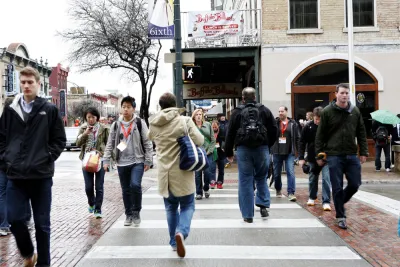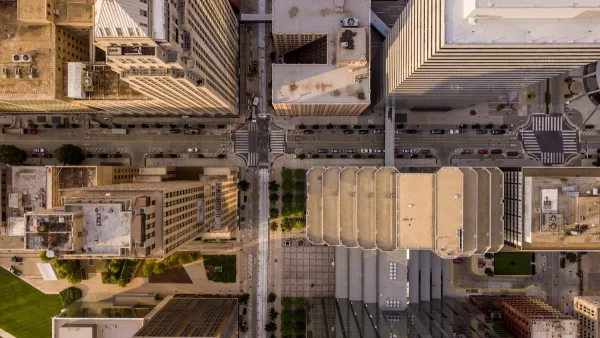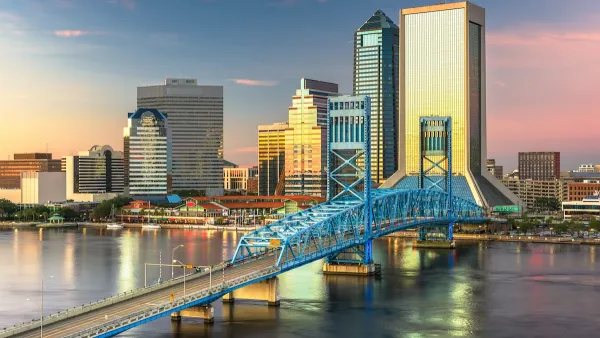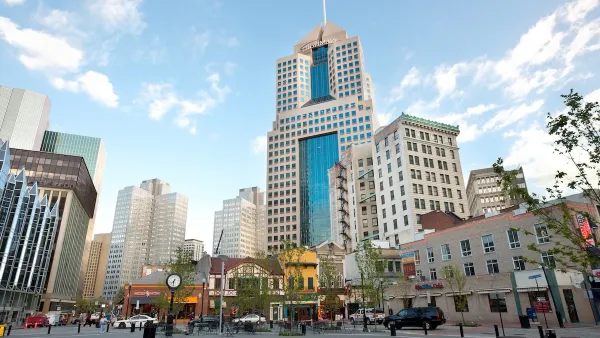From NIMBYism to entrenched traffic engineering culture, a variety of complex obstacles have prevented Vision Zero advocates from achieving the movement’s goals in the U.S.

David Zipper delves into the complex reasons why the Vision Zero movement has made little progress in the United States, where pedestrian deaths are rising in recent years despite less vehicle miles driven during the pandemic.
Even though dozens of U.S. cities launched Vision Zero programs and pledged to prioritize pedestrian safety, many streets have grown more, not less, deadly. “In New York City, traffic deaths in 2021 were the highest since committing to Vision Zero seven years earlier. Portland, Oregon, saw more traffic deaths last year than it had since 1990, and Austin set a new all-time record (both became Vision Zero adherents in 2015). Deaths are surging in Philadelphia and Washington, D.C., as well. In fact, it’s hard to find any Vision Zero cities where traffic deaths have declined.”
Zipper mentions one notable outlier, Hoboken, New Jersey, which eliminated traffic deaths for three consecutive years. “But signing on to Vision Zero proved to be far less difficult than adjusting policy and infrastructure to reflect the approach.”
According to Seleta Reynolds, the director of the Los Angeles Department of Transportation, “A moment comes when a person shows up to do the actual [infrastructure] project, and it’s down the street from your house. Whether it’s a bike lane or a bus lane, the calculus suddenly changes, and it feels like a fundamental assault on your way of life.”
Zipper also points to opposition from political leaders (the top) and engineering and planning culture (the middle). “To make progress even harder, local Vision Zero efforts must also overcome a bevy of state and federal rules that tie their hands.”
“Today, a traffic death toll that’s rising faster per mile than any time since Calvin Coolidge was in the White House seems to justify a new wave of popular outrage, along with urgent calls for change. Buttigieg has repeatedly referred to a ‘national crisis’ of fatalities,” Zipper points out. “But how many Americans are prepared to fight to ensure that Vision Zero promises translate into action?”
FULL STORY: Why ‘Vision Zero’ Hit a Wall

Analysis: Cybertruck Fatality Rate Far Exceeds That of Ford Pinto
The Tesla Cybertruck was recalled seven times last year.

National Parks Layoffs Will Cause Communities to Lose Billions
Thousands of essential park workers were laid off this week, just before the busy spring break season.

Retro-silient?: America’s First “Eco-burb,” The Woodlands Turns 50
A master-planned community north of Houston offers lessons on green infrastructure and resilient design, but falls short of its founder’s lofty affordability and walkability goals.

Test News Post 1
This is a summary

Analysis: Cybertruck Fatality Rate Far Exceeds That of Ford Pinto
The Tesla Cybertruck was recalled seven times last year.

Test News Headline 46
Test for the image on the front page.
Urban Design for Planners 1: Software Tools
This six-course series explores essential urban design concepts using open source software and equips planners with the tools they need to participate fully in the urban design process.
Planning for Universal Design
Learn the tools for implementing Universal Design in planning regulations.
EMC Planning Group, Inc.
Planetizen
Planetizen
Mpact (formerly Rail~Volution)
Great Falls Development Authority, Inc.
HUDs Office of Policy Development and Research
NYU Wagner Graduate School of Public Service




























